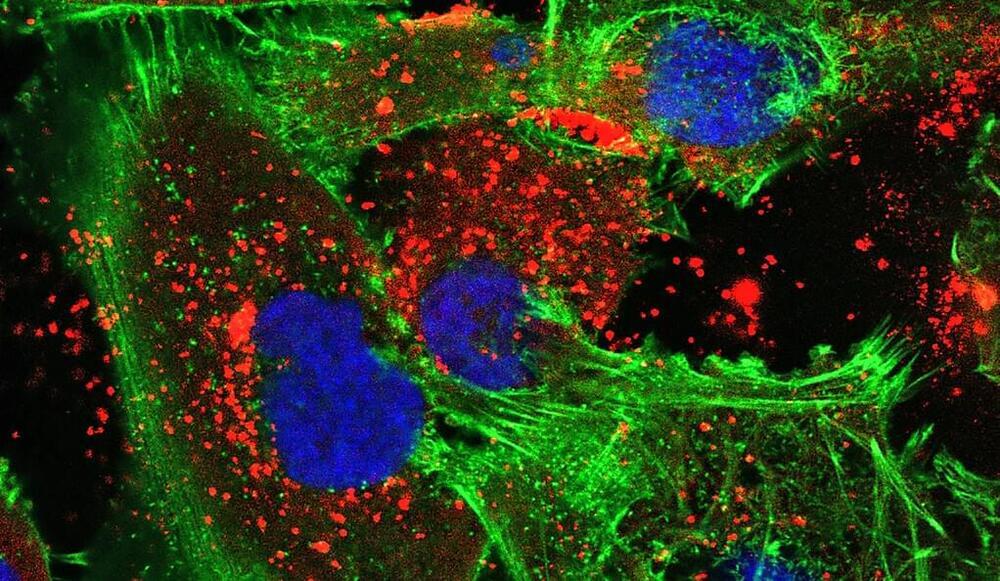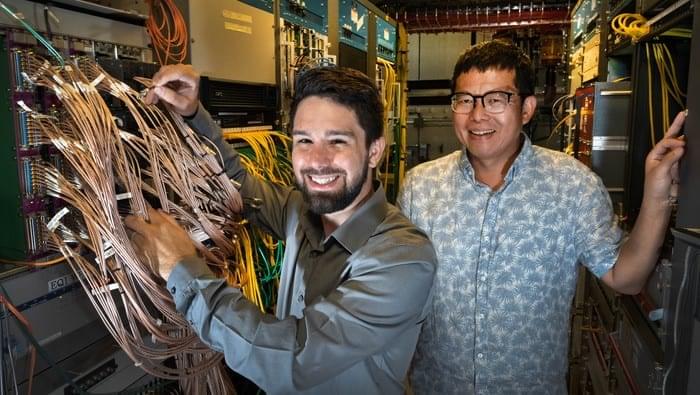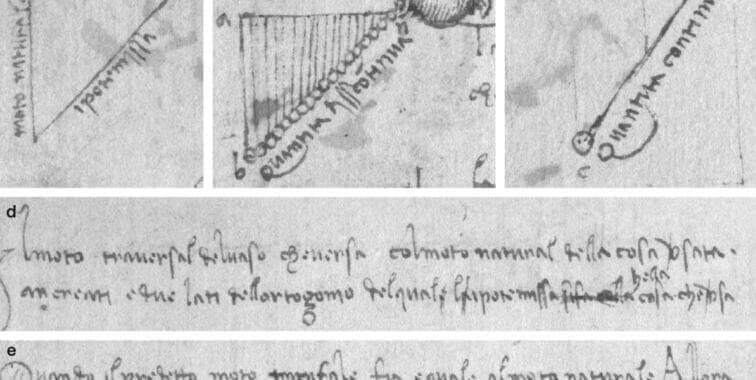From A to B, check out this week’s awesome tech stories from around the web.



Of the respondents, 28 percent said they were more likely than not to use gene editing to make their babies smarter, and 38 percent said they’d use polygenic screening. The researchers also noted what they called a bandwagon effect, where people who were told something along the lines of “everyone else is doing it” were more likely to say they’d do it too. This is logical; our comfort with decisions is buoyed by a sense that others in our shoes would choose similarly.
It’s important to note, though, that the survey made it clear that genetically enhancing embryos didn’t come with a guaranteed result of a smarter kid. “In this study, we stipulated a realistic effect—that each service would increase the odds of having a child who attends a top-100 college by 2 percentage points, from 3 percent to 5 percent odds—and lots of people are still interested,” said Michelle N. Meyer, chair of the Department of Bioethics and Decision Sciences at Geisinger and first author of the article.
The numbers—28 and 38 percent—don’t seem high. That’s a little below and a little above one-third of total respondents who would use the technologies. But imagine walking around in a world where one out of every three people had had their genes tweaked before birth. Unsettling, no? The researchers said their results point to substantial and growing interest in genetic technologies for offspring enhancement, and that now is the time to get a national conversation going around regulations.

There are stark differences between metals, through which electrons flow freely, and electrical insulators, in which electrons are essentially immobile. And despite the obvious difficulties in finding a way to switch back and forth from a metal to an insulator within one material, physicists are trying to figure out how.
“Say you want to put billions of circuit elements on a tiny chip and then control, at that microscopic scale, whether just one of the elements is metallic or insulating in a controlled fashion,” said Debanjan Chowdhury, assistant professor of physics in the College of Arts and Sciences. “It would be remarkable if you could control the microscopic device at the flick of a switch.”
Digging into recent past experimental results to try to reconcile experiment and theory, Chowdhury and doctoral candidate Sunghoon Kim found that even a tiny amount of imperfection, inherent in any real-life material, plays a key role in revealing the universal physics associated with the experimental metal-to-insulator transition (Physical Review Letters, “Continuous Mott Transition in Moiré Semiconductors: Role of Long-Wavelength Inhomogeneities”). Understanding the physics behind this mysterious phase transition could lead to new complex microscopic circuits, superconductors and exotic insulators that could find use in quantum computing.

A team of researchers from Yale and the University of Connecticut (UConn) has developed a nanoparticle-based treatment that targets multiple culprits in glioblastoma, a particularly aggressive and deadly form of brain cancer.
The results are published in Science Advances (“Anti-seed PNAs targeting multiple oncomiRs for brain tumor therapy”).
A new treatment developed by Yale researchers uses bioadhesive nanoparticles that adhere to the site of the tumor and then slowly release the synthesized peptide nucleic acids that they’re carrying. In this image, the nanoparticles (red) are visible within human glioma tumor cells (green with blue nuclei). (Image: Yale Cancer Center)
Tassili n’Ajjer is a national park in the Sahara desert, located on a vast plateau in southeastern Algeria, bordering Libya, Niger, and Mali. It covers an area of roughly 80,000 sq. km. and contains one of the most important collections of prehistoric rock art in the world; it was inducted into the UNESCO World Heritage Site list in 1982. In 1986, UNESCO declared the area a Biosphere Reserve.
The plateau is composed largely of sandstone, and the natural erosion has resulted in hundreds of natural rock arches and other spectacular land formations — the ‘forests of stone’. Because of the altitude and the water-holding properties of the sandstone, the vegetation is somewhat richer than in the surrounding desert, and includes scattered woodland of the endangered endemic species of the Saharan cypress — one of the oldest trees in the world — and the Saharan myrtle. The literal English translation of Tassili n’Ajjer is ‘plateau of rivers’. Relict populations of the West African crocodile persisted in the Tassili n’Ajjer until the twentieth century. Various other fauna still reside on the plateau, including Barbary sheep, the only surviving type of the larger mammals depicted in the rock art of the area.

NEW YORK (AP) — Archaeologists in Kenya have dug up some of the oldest stone tools ever found, but who used them is a mystery.
In the past, scientists assumed that our direct ancestors were the only toolmakers. But two big fossil teeth found along with the tools at the Kenyan site belong to an extinct human cousin known as Paranthropus, according to a study published Thursday in the journal Science.
This adds to the evidence that our direct relatives in the Homo lineage may not have been the only tech-savvy creatures during the Stone Age, said study author Rick Potts, director of the Smithsonian’s Human Origins Program.


Caltech engineer Mory Gharib was poring over the digitized notebooks of Leonardo da Vinci one day, looking for sketches of flow visualization to share with his graduate students for inspiration. That’s when he noticed several small sketches of triangles, whose geometry seemed to be determined by grains of sand poured out from a jar. Further investigation revealed that Leonardo was attempting to study the nature of gravity, and the little triangles were his attempt to draw an equivalence between gravity and acceleration—well before Isaac Newton came up with his laws of motion, and centuries before Albert Einstein would demonstrate the equivalence principle with his general theory of relativity. [Edited for clarity.] Gharib was even able to re-create a modern version of the experiment.
Gharib and his collaborators described their discovery in a new paper published in the journal Leonardo, noting that, by modern calculations, Leonardo’s model produced a value for the gravitational constant (G) to around 97 percent accuracy. What makes this finding even more astonishing is that Leonardo did all this without a means of accurate timekeeping and without the benefit of calculus, which Newton invented in order to develop his laws of motion and universal gravitation in the 1660s.
“We don’t know if [Leonardo] did further experiments or probed this question more deeply,” Gharib said. “But the fact that he was grappling with the problems in this way—in the early 1500s—demonstrates just how far ahead his thinking was.”
For copyright contact: stienlemane2379(at)gmail.com.
Welcome to Futureunity, where we explore the fascinating world of science, technology, and the universe! From the inner workings of the human body to the outer reaches of space, we delve into the latest and most interesting discoveries that are shaping our world. Whether you’re a science buff or just looking for some mind-blowing facts, we’ve got you covered. Join us as we uncover the mysteries of the world around us and discover new frontiers in the fields of science and technology. Get ready for a journey that’s both educational and entertaining!
Disclaimer Fair Use:
1. The videos have no negative impact on the original works.
2. The videos we make are used for educational purposes.
3. The videos are transformative in nature.
4. We use only the audio component and tiny pieces of video footage, only if it’s necessary.
Copyright Disclaimer under section 107 of the Copyright Act 1976, allowance is made for “fair use” for purposes such as criticism, comment, news reporting, teaching, scholarship, education, and research. Fair use is a use permitted by copyright statutes that might otherwise be infringing.
Disclaimer:
Our channel is based on facts, rumors & fiction.

The CEO of Tesla has made it his mission to colonize the planet Mars in our lifetime.
Elon Musk is known for making wild promises and setting outrageous goals. It’s one of his detractors’ biggest criticisms.
But it is also one of the visionary entrepreneur’s driving forces. He thrives on setting goals that society broadly deems unattainable. He loves nothing more than having his back to the wall, the odds against him.